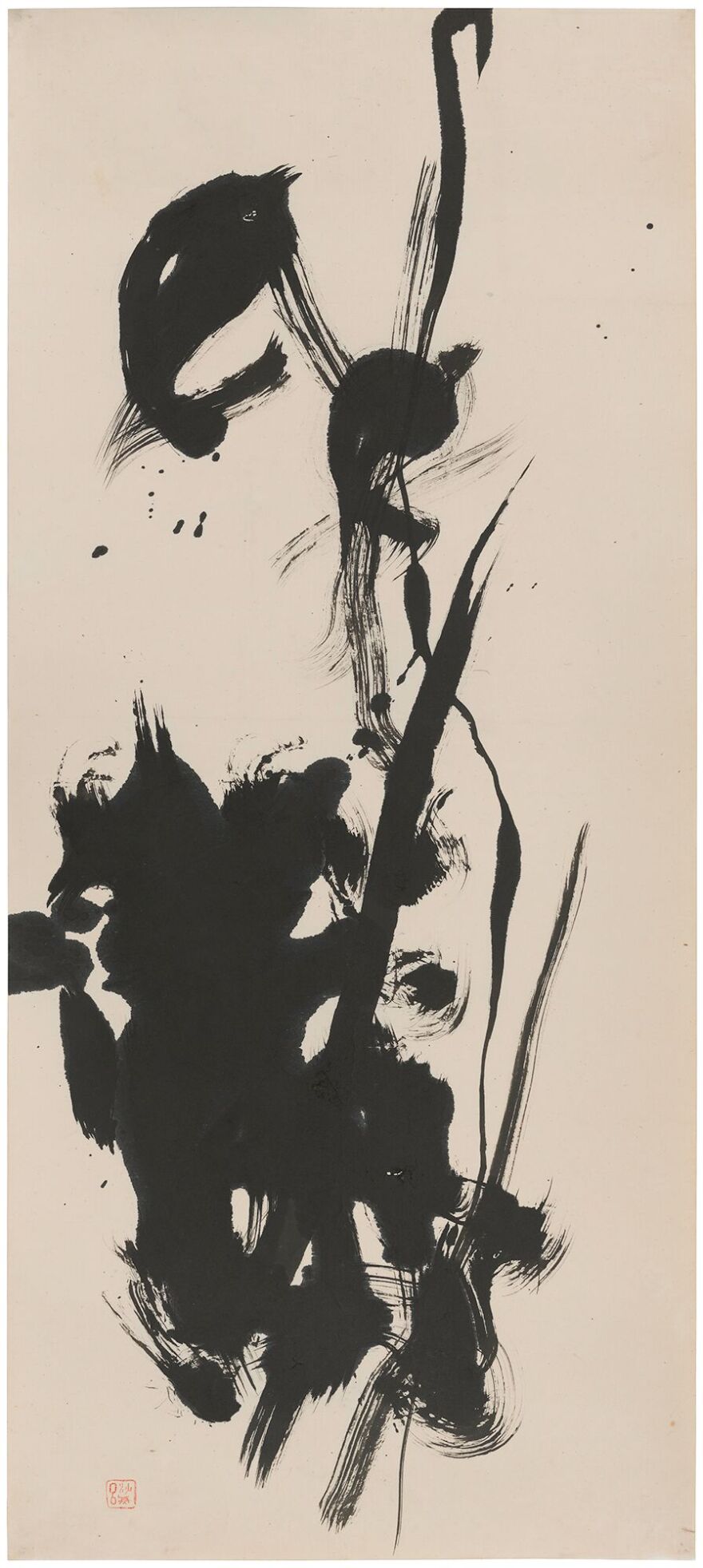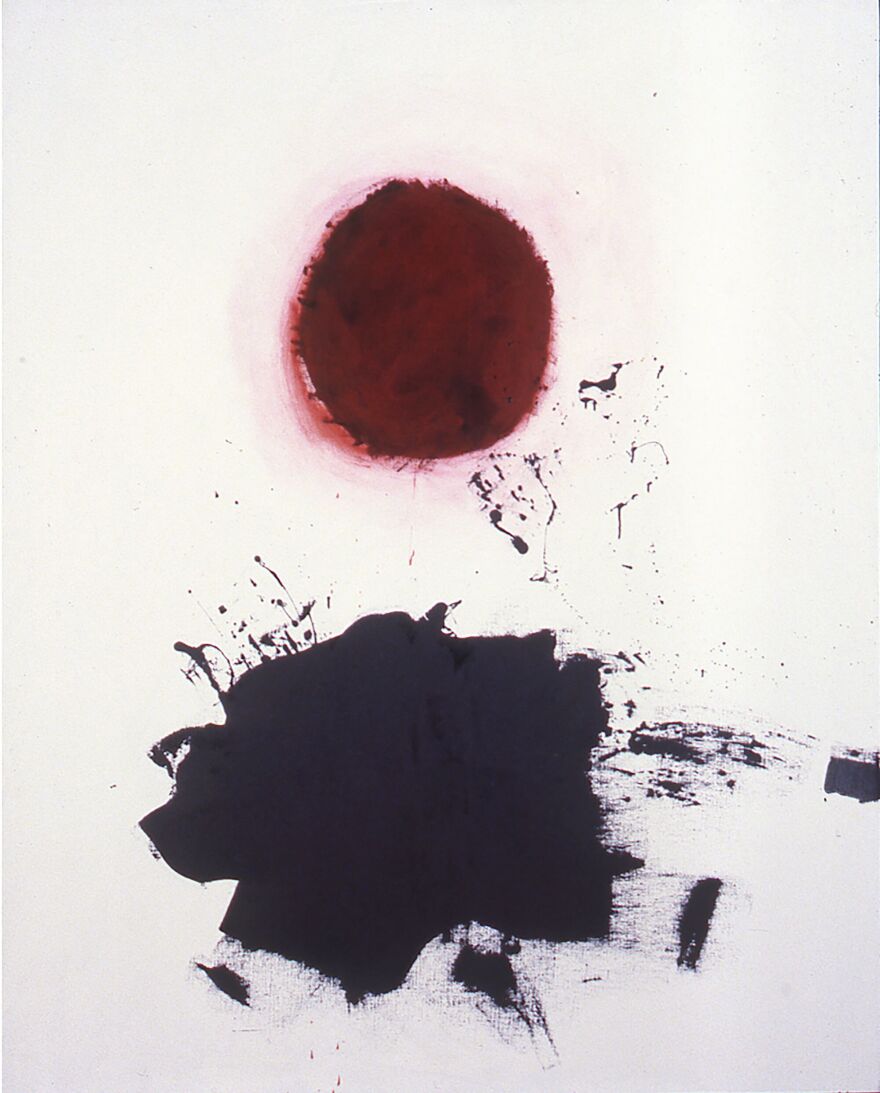In the 1940’s and 50’s, America’s audacious painters veered away from depicting the world as it looks, opting instead for interior worlds, or simple records of their actions. Abstract Expressionism was the first truly American modern art movement, and it was a huge psychological leap away from anything before it. HPR’s Noe Tanigawa reports a new show at the Honolulu Museum of Artshows Hawai‘i’s contribution to this world wide movement.

Abstract Expressionism: Looking East from the Far West continues at the Honolulu Museum of Art through January 21st, 2018.
Abstract Expressionism was the first truly American modern art movement, and it was a huge psychological leap away from anything before it. To imagine the impact of Abstract Expressionism, you have to remember in Western art, representational painting, that is, realistic looking paintings, hit a highpoint, when photography entered the scene. Then cubism and impressionism started breaking up the picture plane. These painters, even the Fauves (Wild Beasts) were still standing back, painting with their wrists, however, when the Americans swaggered in. Theresa Papanikolas, curated the exhibit, Abstract Expressionism: Looking East from the Far West.
Papanikolas: You’re looking at artists like Jackson Pollock, Mark Rothko, artists who paint from their souls, from their emotions, from their intellect, their intuition, using gesture and color. Large paintings, paintings that don’t necessarily tell a story or attach themselves to any sort of message but instead are purely the product of the individual ego.
Why do people like these paintings?
Papanikolas: Because they’re fantastic, they’re just incredibly arresting. They’re beautiful, just seeing it is a highly meaningful experience. It’s extremely moving. Just wait until you go into the gallery it’s simply amazing.

Papanikolas: You think you’re going to go and you’ll be plunged into Mad Men or you’ll be plunged into the 1950’s but in fact, these images are so timeless, and so all enveloping and all encompassing, you stand in front of them and you achieve a sense of place, and well-being and being in the moment, and in the present. The fact is, there were a lot of artists of East Asian descent who were active in this movement who have been overlooked in the common received history of Abstract Expressionism and so one of the things this exhibition does is expand the conversations and discourse around Abstract Expressionism to include these artists. And once you do, you begin to draws connections between New York School Abstract Expressionist spontaneity and the being in the moment of Zen Buddhism, or at least the Western understanding of it.
Papanikolas: A lot of these Japanese American artists were from right here in Hawai‘i. We in Hawai‘i know them well, they’re Tadashi Sato, Satoru Abe, Reuben Tam, all these different artists, who were in New York in the 50’s, going to art school, moving in these circles. Now at the Museum, we’ll be able to see them in that New York context. We’ll see them in a new light
Abstract Expressionists on the continent were influenced by Zen Buddhism, its immediacy spoke to them. In Hawai‘i, artists were exposed to different aspects of Asian culture and brought that to a different type of Abstract Expressionism, wouldn’t you say?
Papanikolas: Right. it’s slightly different I would say because a lot of these artists are Nisei so they’re raised in these traditional Japanese households, and they’re learning about tea ceremony and calligraphy
And keeping your head down, and not standing out, and not being a wild Abstract Expressionist.

Papanikolas: Absolutely, and that comes through in their work, it’s much quieter, it’s less in your face. You see the hand of the artist in the work, but not in the same way as a Jackson Pollock. They’re very, very ego-less, I would say.
Think of Hawai‘i in the 1950’s, does it seem a bit extraordinary that kids barely off the plantation aspired to be fine artists?
Satoru Abe: That’s the beauty. The beauty is to be young, naïve and to have a dream. That’s all. That’s all you need.
Sculptor, painter Satoru Abe was part of that first wave of Hawai‘i’s contemporary artists. More of their story in our next installment.
Speaking of local connections, on a return visit to the Abstract Expressionist show, I was struck by the series of prints by Ad Reinhardt. The subtle modulations of rich color remind me of palm trees silhouetted against the evening sky, becoming barely discernible as night falls.




